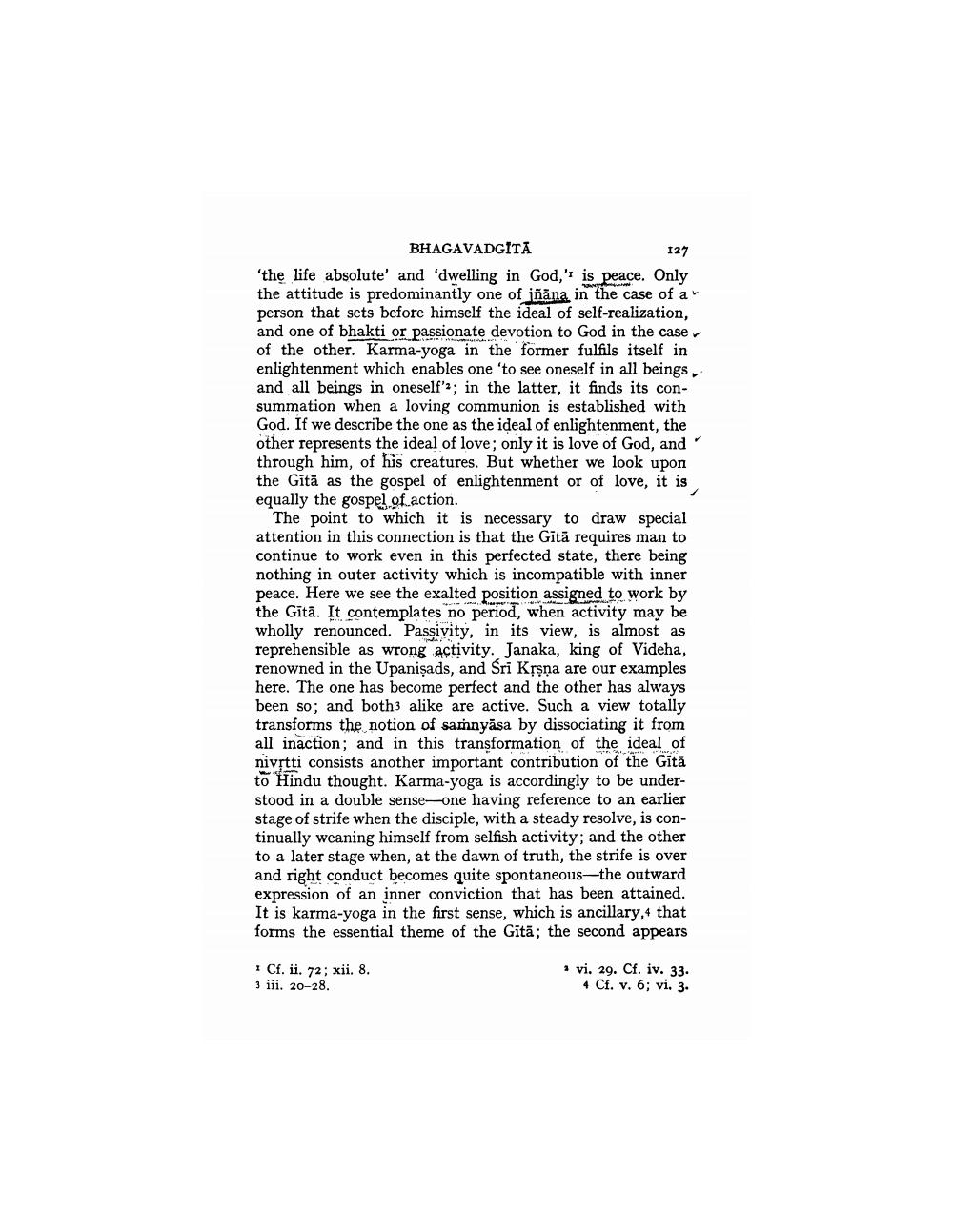________________
BHAGAVADGITA
127 'the life absolute' and 'dwelling in God,' is peace. Only the attitude is predominantly one of jñāna in the case of a person that sets before himself the ideal of self-realization, and one of bhakti or passionate devotion to God in the case of the other. Karma-yoga in the former fulfils itself in enlightenment which enables one 'to see oneself in all beings and all beings in oneself'?; in the latter, it finds its consummation when a loving communion is established with God. If we describe the one as the ideal of enlightenment, the other represents the ideal of love; only it is love of God, and through him, of his creatures. But whether we look upon the Gitā as the gospel of enlightenment or of love, it is equally the gospel of action.
The point to which it is necessary to draw special attention in this connection is that the Gītā requires man to continue to work even in this perfected state, there being nothing in outer activity which is incompatible with inner peace. Here we see the exalted position assigned to work by the Gītā. It contemplates no period, when activity may be wholly renounced. Passivity, in its view, is almost as reprehensible as wrong activity. Janaka, king of Videha, renowned in the Upanişads, and Sri Krsna are our examples here. The one has become perfect and the other has always been so; and both3 alike are active. Such a view totally transforms the notion of samnyāsa by dissociating it from all inaction; and in this transformation of the ideal of nivetti consists another important contribution of the Gită to Hindu thought. Karma-yoga is accordingly to be understood in a double sense-one having reference to an earlier stage of strife when the disciple, with a steady resolve, is continually weaning himself from selfish activity; and the other to a later stage when, at the dawn of truth, the strife is over and right conduct becomes quite spontaneous--the outward expression of an inner conviction that has been attained. It is karma-yoga in the first sense, which is ancillary,4 that forms the essential theme of the Gītā; the second appears
? Cf. ii. 72; xii. 8. 3 iii. 20-28.
* vi. 29. Cf. iv. 33.
4 Cf. v. 6; vi. 3.




